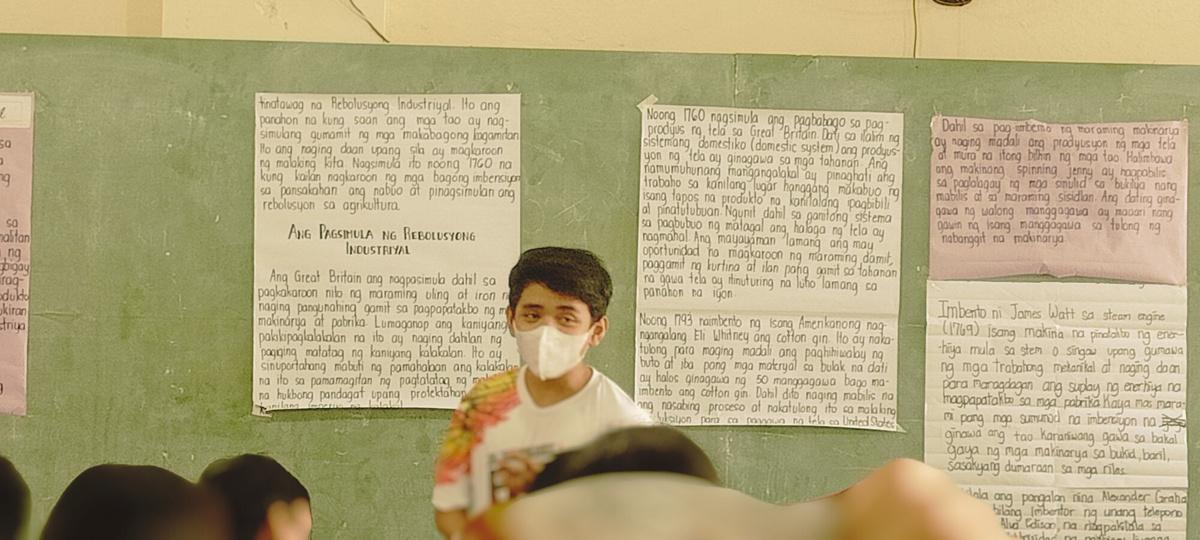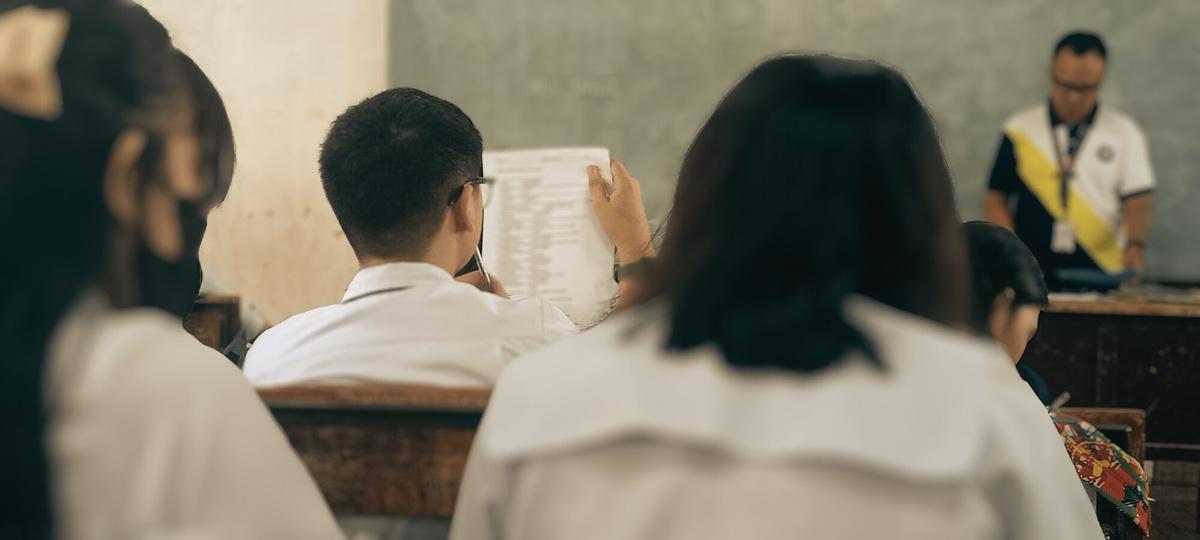
2 minute read
WEEK 3
this Friday's Araling Panlipunan (AP) class, instead of administering the assessment, Mrs. Villegas continued the reporting activity. Group 3 was tasked to report on the Industrial Revolution. There was only one representative who reported. The student had a visual aid in the form of Manila papers full of text. But before the reporting, Mrs. Villegas did a recall of the previously reported topics to establish a connection.
Her recall strategy is done through lectures. After which, the activity then proceeded where the reporters merely read what was in the visual aid. Mrs. Villegas asked questions of the reporter to test their understanding. Questions mostly tested the students’ remembering and understanding skills. The reporter then threw ten (10) questions and the teacher determines who will answer.
Advertisement
From what I have observed, there is a trend of varying degrees of engagement among students during the reporting activity. Those who are actively engaged are the group representative and the students picked by the teacher to answer the questions. Meanwhile, while the teacher talked at the back, the remaining students, particularly those at the front and farther corners have their attention somewhere else. For instance, a few were sleeping, combing their hair, doodling in their papers, and playing on their phones secretly, among others. Thus, the challenge here is to involve all of the class in the activity. The teacher barely does something to address this problem. Another challenge is the reporter's struggle with public speaking which the teacher addressed by giving him time to relax. Additionally, another challenge is the students' inadequacy in the proper crafting of visual aids. They just copy and paste what's found in the module. Their penmanship as well as observance of alignment and neatness needs improvement. The teacher addressed this by providing them constructive feedback like using bullets in presenting the information. There is also an issue regarding group collaboration where the representative mostly takes all the work. For instance, they didn't receive assistance when the teacher asked questions to check the group's mastery of the topic assigned to them. But the positives of reporting and the Socratic Method as teaching strategies outweigh its cons. It encourages active engagement and participation from students. Another positive aspect of the said instructional strategies is that both provide opportunities for students to develop their communication and presentation skills. This can be a valuable skill that can benefit students in future academic and professional settings. However, there are also some negative aspects to these strategies. For example, the reporter from another class felt nervous. Some students are unable to answer correctly which may make them feel embarrassed and frustrated.
This week's encounter provided me with a deeper understanding and appreciation of student-centered learning and the role of the teacher as the facilitator. One thing that stood out to me during the observation was the importance of creating a supportive and collaborative learning environment. The teacher's encouragement to the nervous presenter and not shaming students made the classroom a safe and inclusive space. I also appreciate the teaching strategies being used since it let students take ownership of their learning, develop their skills, and build confidence in their abilities. I look forward to incorporating these realizations into my instructional practice.
DATE: APRIL 14,2023
CLASS OBSERVED: GRADE 8
SPECIAL
SCIENCE CLASS ALPHA AND BETA
DATE: APRIL 14,2023
CLASS OBSERVED: GRADE 8
SPECIAL SCIENCE CLASS ALPHA AND BETA








